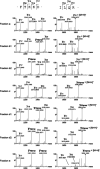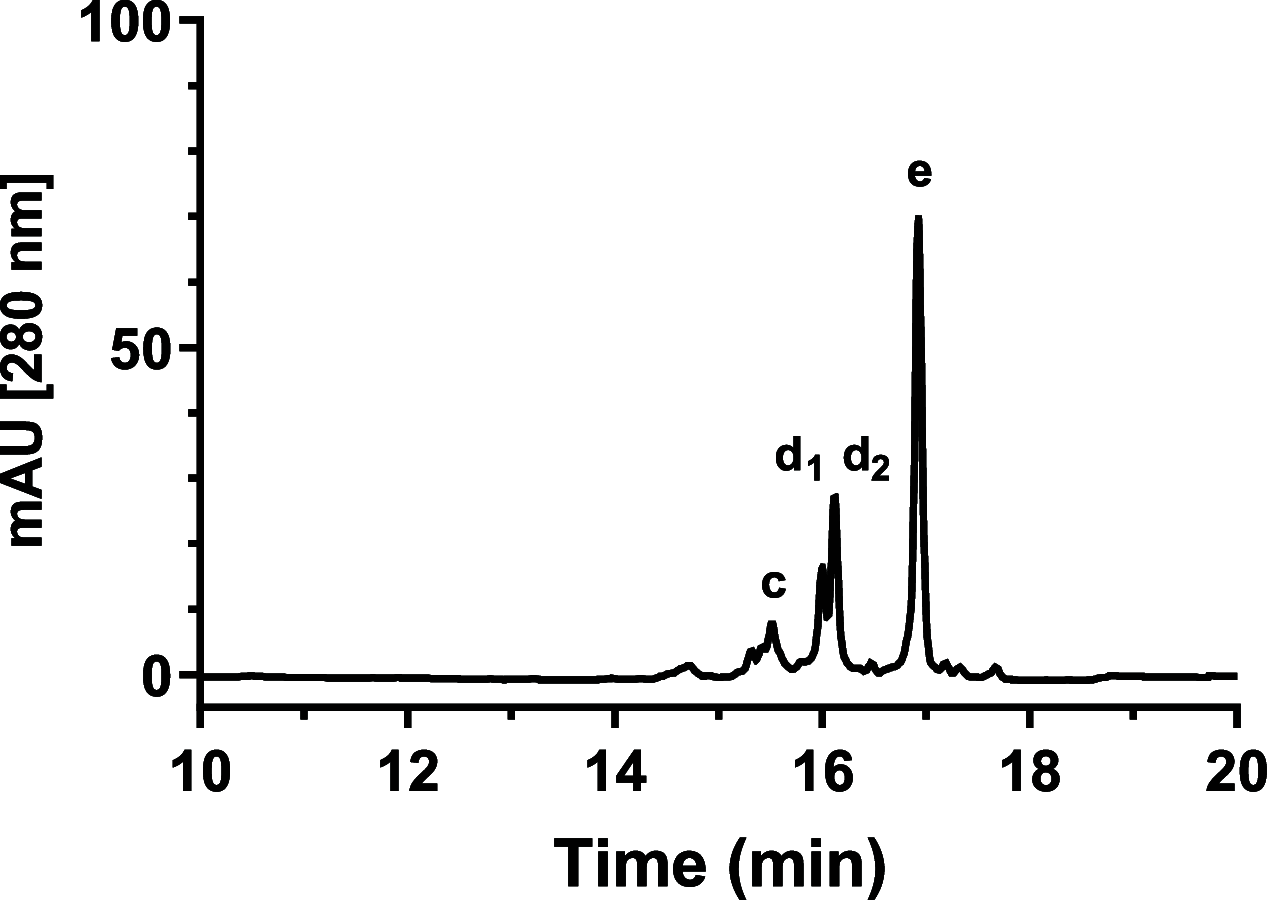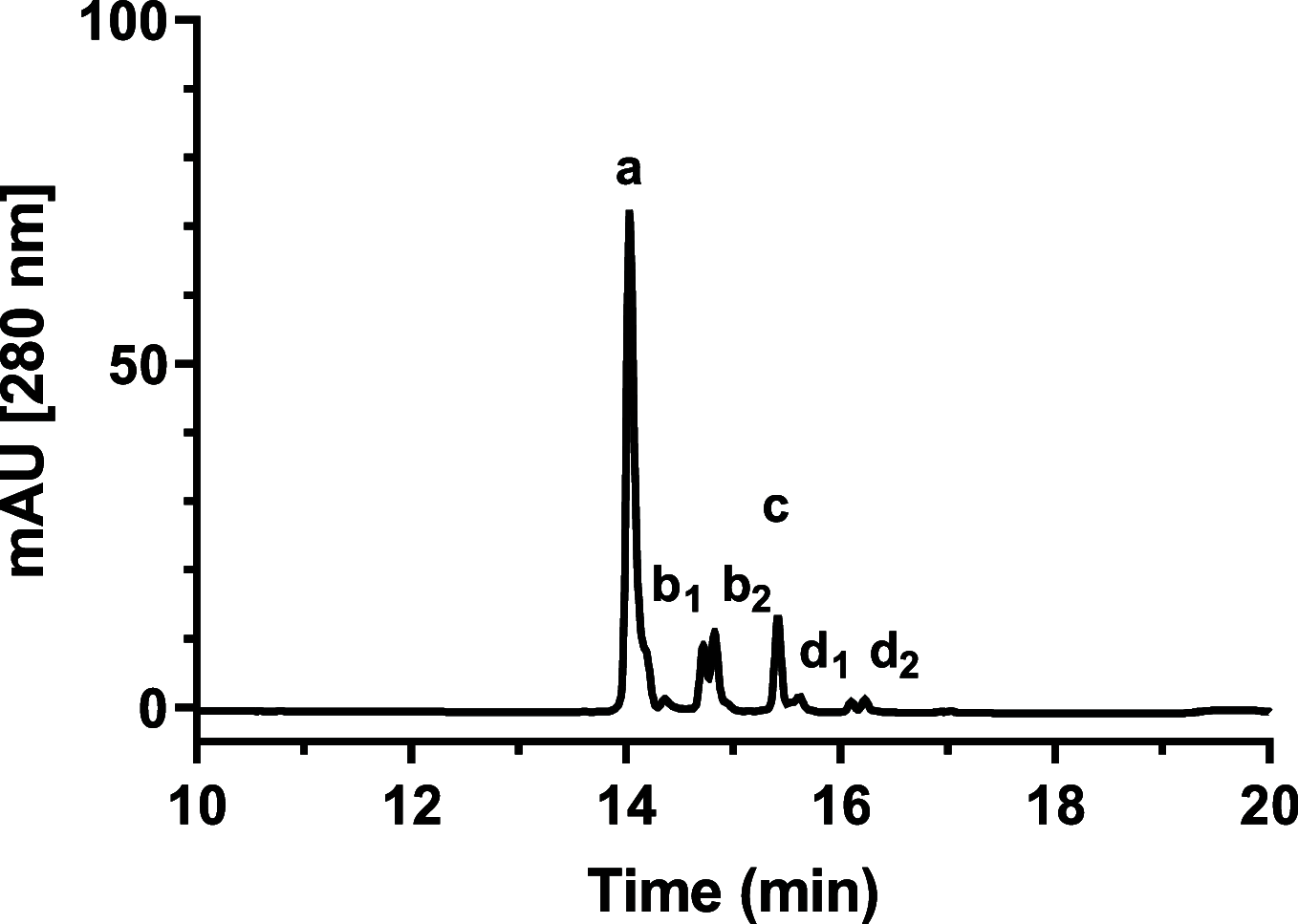Tritium Labeling of Neuromedin S by Conjugation with [3H] N-Succinimidyl Propionate
- PMID: 36687043
- PMCID: PMC9851027
- DOI: 10.1021/acsomega.2c06758
Tritium Labeling of Neuromedin S by Conjugation with [3H] N-Succinimidyl Propionate
Abstract
The human neuropeptide neuromedin S (NMS) consists of 33 amino acids. The introduction of tritium atoms into NMS has not been described so far. This represents a gap for using [3H]NMS in radioreceptor binding assays or in tracking and monitoring their metabolic pathway. Two approaches for the incorporation of tritium into NMS were explored in this study: (1) halogenation at the His-18 residue followed by catalyzed iodine-127/tritium exchange and (2) conjugation of tritiated N-succinimidyl-[2,3-3H3]propionate ([3H]NSP) to at least one of the three available primary amines of amino acids Ile-1, Lys-15, and Lys-16 in the peptide sequence. Although iodination of histidine was achieved, subsequent iodine-127/deuterium exchange was unsuccessful. Derivatization at the three possible amino positions in the peptide using nonradioactive NSP resulted in a mixture of unconjugated NSM and 1- to 3-conjugations at different amino acids in the peptide sequence. Each labeling position in the mixture was assigned following detailed LC-MS/MS analysis. After separating the mixture, it was shown in an in vitro fluorometric imaging plate reader (FLIPR) and in a competitive binding assay that the propionyl-modified NMS derivatives were comparable to the unlabeled NMS, regardless of the degree of labeling and the labeling position(s). A molecular simulation with NMS in the binding pocket of the protein neuromedin U receptor 2 (NMUR2) confirmed that the possible labeling positions are located outside the binding region of NMUR2. Tritium labeling was achieved at the N-terminal Ile-1 using [3H]NSP in 7% yield with a radiochemical purity of >95% and a molar activity of 90 Ci/mmol. This approach provides access to tritiated NMS and enables new investigations to characterize NMS or corresponding NMS ligands.
© 2023 The Authors. Published by American Chemical Society.
Conflict of interest statement
The authors declare the following competing financial interest(s): All authors are in paid employment by the company F. Hoffmann-La Roche AG during the completion of the study.
Figures











Similar articles
-
Characterization of neuromedin U (NMU), neuromedin S (NMS) and their receptors (NMUR1, NMUR2) in chickens.Peptides. 2018 Mar;101:69-81. doi: 10.1016/j.peptides.2017.12.022. Epub 2017 Dec 27. Peptides. 2018. PMID: 29288685
-
The antiobesity effects of centrally administered neuromedin U and neuromedin S are mediated predominantly by the neuromedin U receptor 2 (NMUR2).Endocrinology. 2009 Jul;150(7):3101-9. doi: 10.1210/en.2008-1772. Epub 2009 Mar 26. Endocrinology. 2009. PMID: 19324999 Free PMC article.
-
Postnatal developmental of Neuromedin S and its receptor in the male Xiaomeishan pig reproductive axis.Anim Reprod Sci. 2017 Jun;181:115-124. doi: 10.1016/j.anireprosci.2017.03.023. Epub 2017 Apr 2. Anim Reprod Sci. 2017. PMID: 28389048
-
Neuromedins NMU and NMS: An Updated Overview of Their Functions.Front Endocrinol (Lausanne). 2021 Jul 1;12:713961. doi: 10.3389/fendo.2021.713961. eCollection 2021. Front Endocrinol (Lausanne). 2021. PMID: 34276571 Free PMC article. Review.
-
Neuromedin S: discovery and functions.Results Probl Cell Differ. 2008;46:201-12. doi: 10.1007/400_2007_054. Results Probl Cell Differ. 2008. PMID: 18214396 Review.
References
LinkOut - more resources
Full Text Sources
Miscellaneous

